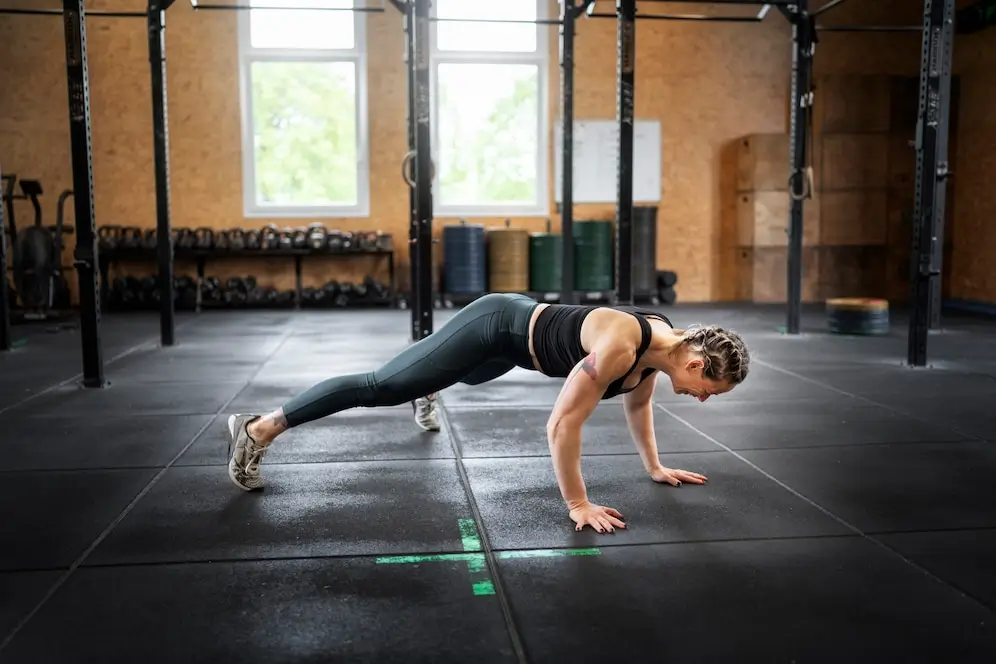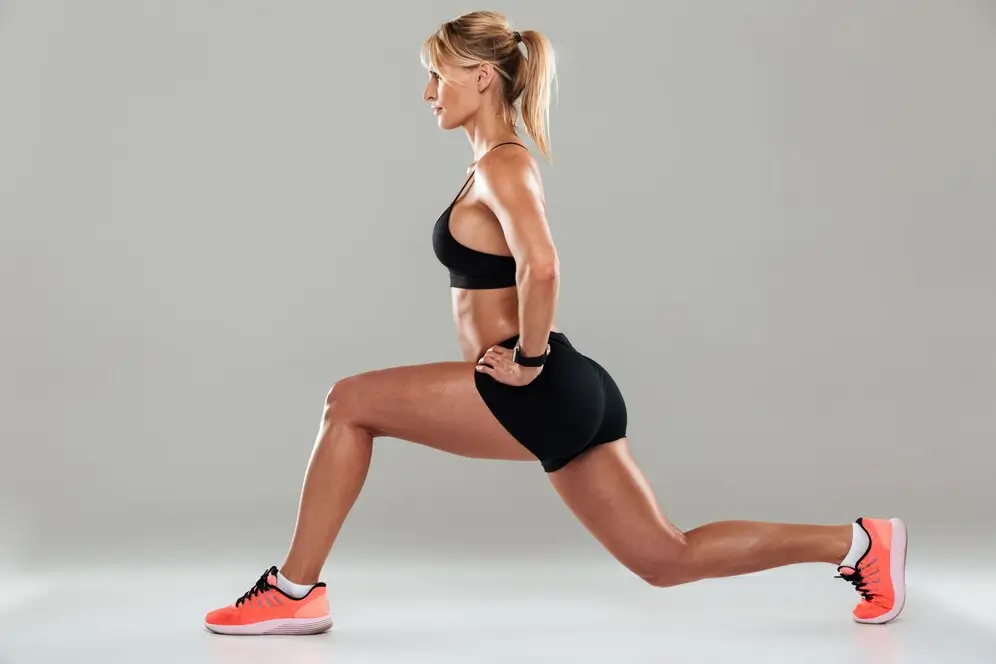Unlocking Power And Precision: The Ultimate Guide To Building Strength With Bodyweight Workouts
In this modern day of high-tech gym equipment and intricate training regimens, many individuals neglect simple and efficient bodyweight exercises. Without breaking the bank on gym memberships or investing in sophisticated equipment, bodyweight training is a straightforward approach to improving your fitness, strength, and flexibility. This article will teach you how to work out effectively using just your Bodyweight workout and will demonstrate the many advantages of bodyweight workouts.
Table of Contents
What Is A Bodyweight Workout?
Bodyweight workout is workouts that use your body weight as resistance instead of extra weights or tools. Alternating different muscle groups or including them in a full-body routine are both possible with these exercises.
Those who choose not to utilize a lot of equipment or who do not have access to a gym would benefit greatly from bodyweight training.
In addition to enhancing general fitness and fostering a balanced physique, the functional nature of these workouts imitates motions that occur in real life.
How Does Bodyweight Workout Work?
Bodyweight workouts are like resistance training, but they use your body weight to make you stronger, more durable, and more flexible.
Workouts that use your body weight are successful because muscles get stronger over time and because they use movement to create resistance.
When you do a Bodyweight workout, like a push-up or squat, your muscles contract against the pull of gravity. Small tears happen in the muscle fibres when they tighten, which sets off the body’s natural healing process.
As the muscles heal, they get stronger and more flexible, adapting to the stress they were under during the activity.
Also, exercises that you can do with your body work multiple muscle groups at once which improves your coordination and functional power.
They put stress on the core muscles that keep you stable and often try to look like normal, natural moves.
Why Is Bodyweight Exercise Beneficial?
In a world full of expensive exercise gear and complicated workout plans, Bodyweight workout stand out because they are easy to do and work well. Using your own body’s resistance to get fit is easy and works well.
1. Fitness at a Low Cost:
Weightlifting is a naturally cheap Bodyweight workout. Workouts with your own body only need your commitment and drive. This is different from gyms, where membership fees and special equipment can be expensive. More people can now get fit because it’s easier for them to get to. This takes away any cost barriers that might have kept them from living better lives.
2. Improvements in functional fitness:
In contrast to some traditional training tools that target specific muscle groups, bodyweight exercises often copy the way we move naturally.
Focusing on functional exercise is important for making the body better at doing everyday things quickly and easily.
Bodyweight exercises are useful in everyday life, like when you’re carrying food, going up and down stairs, or playing with your kids.
3. Move forward at your own pace:
People of all fitness levels can benefit from exercises that only use your body weight. Start with simple moves like lunges, squats, and modified push-ups.
As your strength and endurance improve, you can move on to more difficult exercises. Push-ups with one arm, handstand push-ups, and pistol squats are some versions that more experienced users can try to get stronger.
People of all skill levels can start Bodyweight workout and work their way up at their own pace.
4. Involvement of the Whole Body:
A lot of workouts you can do with your own body work more than one muscle group at the same time. For a more complete strength build, do exercises like burpees, planks, and mountain climbers that require coordination and agreement between multiple muscles.
This all-encompassing method encourages healthy muscle growth all over the body by treating every muscle the same.
5. Better structural integrity:
A strong core is what makes something strong and stable. You can work out your core muscles by using your body weight for exercises like leg lifts, bicycle crunches, and different types of planks.
Stronger core muscles help with posture and balance and also lower the risk of injury from daily activities and other types of exercise.

How to get started with Bodyweight Workout?
Starting a workout routine with your Bodyweight workout is powerful and easy for people of all fitness levels. Make sure you do these important things before you start physical training:
1. Evaluating yourself:
Find out how fit you are now as a first step. Write down your strengths and places where you can improve. You’ll pick your workouts based on how well you know yourself.
2. Set clear goals for yourself:
Be clear about your exercise goals. Whether you want to lose weight, get stronger, or become more flexible, making, and reaching clear goals will help you stay inspired and on track.
3. Start simple:
If you’re just starting, do some simple movements like lunges, push-ups, and squats. Focus on getting your form right before going on to exercises that get harder.
4. Pay focus on your body:
Always keep an eye on how your physique reacts to the activities you engage in. You should change or skip an exercise if it hurts more than your usual sore muscles. Safety and smooth progress should come first.
What exercise to include in the Bodyweight Workout/Training Routine?
The Push-Up and Pull-Up Foundations of Strength
A basic Bodyweight workout that works the shoulders, chest, triceps and core, these exercises effectively work many muscular groups. Their presence helps the upper body develop stability and strength.
Negative or assisted pull-ups may help beginners build the necessary strength, but they may be challenging at first. Gain the most benefit from the exercise by gradually increasing the number of reps you can do without any support.
1. Lunges And Squats To Build Lower Body Strength
Exercises that are wonderful for toning your quadriceps, hamstrings, glutes, and lower back include squats. To keep you steady, they also engage your core.
Maintain proper form by maintaining your back straight, lowering yourself as if you were sitting in a chair, and aligning your knees with your toes.
Lunges: Lunges strengthen and stabilize the lower body by concentrating on the quadriceps, hamstrings, and hips.
Whether you do a lunge side to side, forward, or backward, it will still enhance your rhythm and balance. Beginners may begin by doing body-only lunges and progress to weighted variations.
2. Leg Raises and Planks Provide Core Stability
The finest exercise for developing core strength and stability is planking. They engage the whole core as well as the obliques, lower back, and abdominal muscles. Make sure there is a straight line from your head to your feet as you start. Try side planks and variations like plank jacks as your endurance increases.
Leg raises are a great exercise for the muscles in your lower abdomen. With your lower back pushed against the ground, lie on your back. Stretch your erect legs towards the heavens. To fully engage the core, control the movement. As you grow better, you may add ankle weights to make it tougher.
3. Cardiovascular Stamina: Burpees and Jumping Jacks
Doing jumping jacks is a fast and simple way to raise your heart rate and improve your heart.
Burpees are a terrific addition to any routine since they train the whole body while remaining challenging.
4. Adaptability and Stability: Dynamic Stretches and Yoga Positions
Include yoga positions in your practice to increase your range of motion and improve your general health. Cobra, child’s pose, and downward dog are great possibilities. These positions give your practice a thoughtful and peaceful element in addition to increasing flexibility.
5. Equilibrium Movements: Single-Leg Tasks
Incorporate workouts that focus on legs into your regimen to test your balance and stability. Lunges and single-leg squats improve proprioception, coordination, and strength all at the same time.
FAQs.
1. How does working out alone compare to conventional gym sessions?
There is no need for supplementary weights or equipment in a bodyweight training regimen since it makes use of your own body’s resistance to promote strength and fitness.
2. Should you do only bodyweight exercises to get fit?
Yes, bodyweight training can be a complete fitness plan because it includes exercises that work on strength, cardiovascular health, flexibility, and general functional fitness.
3. How can people who have never done bodyweight exercises before start?
Simple exercises like squats, push-ups, and lunges are great for beginners. They may go to increasingly challenging and demanding routines as their strength and self-assurance increase.
4. Can people with different levels of health do bodyweight exercises?
Absolutely, bodyweight exercises can be changed to fit people of all fitness levels. They can be made easier for newbies while still being challenged for more experienced users.
Conclusion
Remember that being consistent is crucial when it comes to Bodyweight workout. Incorporate increasing levels of difficulty and intensity into your training routine as you progress.
Keep your focus on your body and ensure proper form. Exercising with just your body weight may be a thrilling and educational experience that reveals your incredible potential.
Ref Link:
https://www.nerdfitness.com/blog/advanced-body-weight-workout-warning-this-will-kick-your-ass/ https://www.menshealth.com/uk/building-muscle/a756325/10-best-bodyweight-exercises-for-men/ https://www.muscleandstrength.com/workouts/9-week-progressive-bodyweight-workout https://www.healthline.com/health/bodyweight-workout

